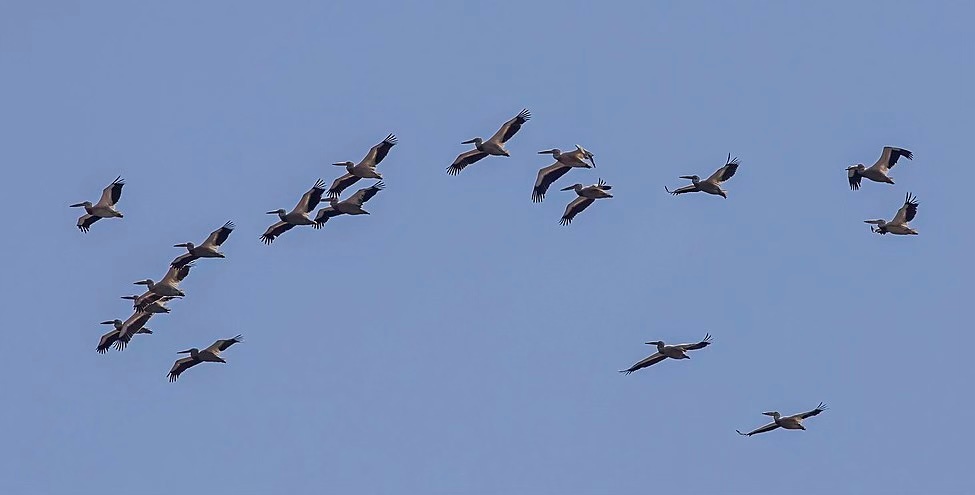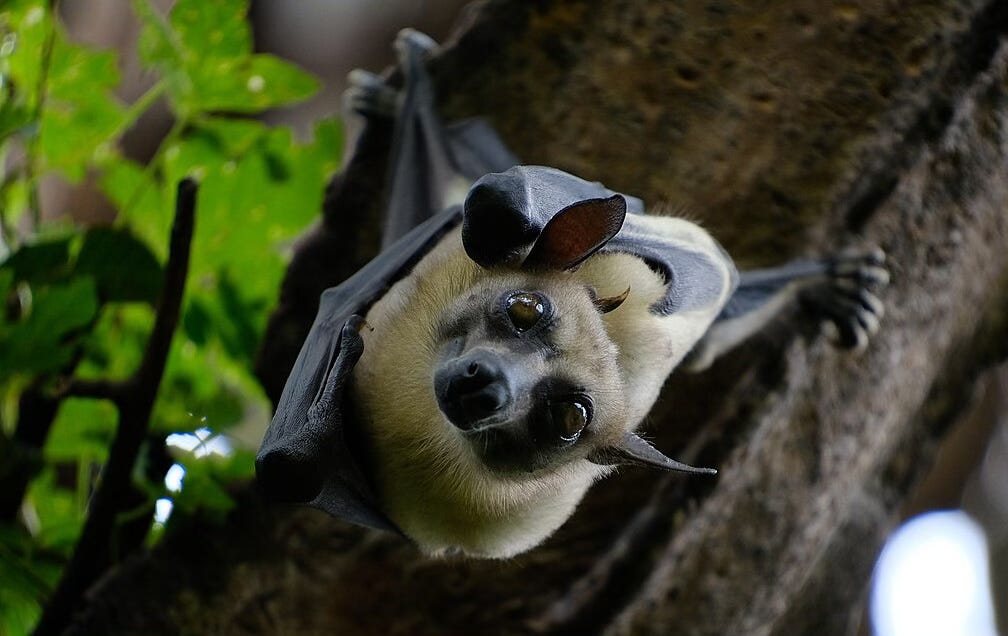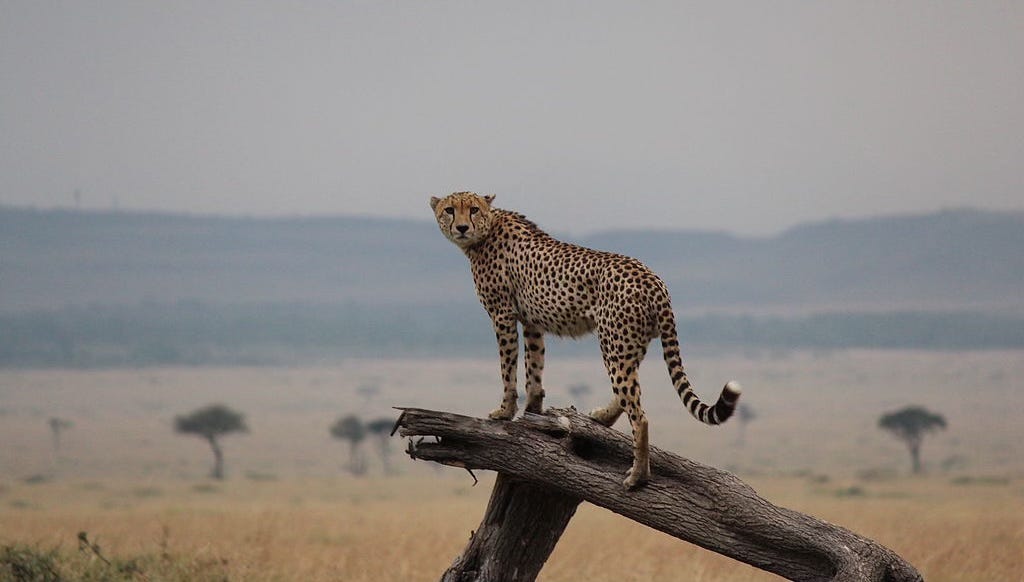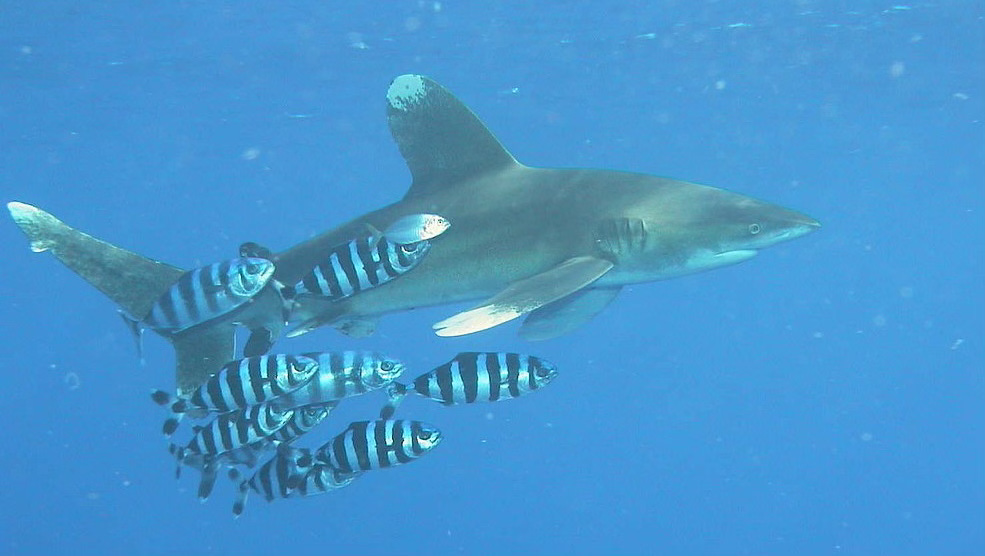It will take a village to save the world’s wild travellers
Migratory species face a growing extinction risk globally. Several international agreements could better protect them, if they work together towards that goal.

Migratory species are the Clark Kents of the natural world. They collectively run circles around the globe like Kent did as Superman to ‘turn back time’ in the 1978 movie. Migrating animals don’t traverse the Earth to revive a dead loved one, as the fictional superhero did. They fly, swim, crawl, walk, and jump across great distances to breed, feed and ultimately, to live.
As they go, migratory species disperse seeds, pollinate plants, deposit nutrients, and provide other environmental benefits. Simply put, their combined actions have a profound impact, as Superman’s effort did. While he transformed how the world turned, these globe-trotting species help to shape how it works.
Alarmingly, many of the Earth’s wild travellers are in dire straits, according to a report released by the Convention on the Conservation of Migratory Species of Wild Animals (CMS). It warned that migratory species face a growing extinction risk globally.
Migratory species at risk
CMS released the State of the World’s Migratory Species report at the start of its latest conference (COP14) in Uzbekistan on 12 February. Prepared by the UN Environment Programme World Conservation Monitoring Centre (UNEP-WCMC), the report spotlighted the conservation status of migratory wild animals, along with the key threats they face.
CMS aims to protect migratory species through international cooperation. It lists 1,189 species across two Appendices, due to their risk of extinction (Appendix I) and need for global collaboration in conservation efforts (Appendix II).
According to the report, the International Union for Conservation of Nature’s Red List shows that over one fifth of CMS-listed species are at risk of extinction, with 44 percent seeing population declines. The situation is particularly grave for listed fishes, such as sharks and rays. 97 percent of them are threatened.
The report also said there are hundreds more migratory species that are nearing or in extinction risk categories, yet they are not listed in CMS’ Appendices.
Several often-compounding threats are driving migratory species’ downward spiral, including climate change, pollution, and disease. The two biggest threats are “habitat loss, degradation and fragmentation” and overexploitation, the report said.

Overexploitation is most common threat
The report drilled down deeper into threats by separating out the various human activities that cause habitat loss, degradation, and fragmentation. Viewed in this way, overexploitation – be it intentional, unintentional, or due to persecution – leads the list of dangers. It is “the most common human activity or process driving extinction risk across both CMS-listed species and the wider group of all migratory species,” according to the report.
CMS made recommendations for tackling overexploitation, key among them being that treaty parties should prohibit the ‘taking’ of Appendix I species from the wild. In all, there are 133 countries and regional entities, such as the EU, that are signatories to the convention. As CMS parties, they are obliged to prevent exploitation of Appendix I species, with some exceptions. In addition, parties that are range states for the species are meant to protect important habitat and ensure migration is possible.
Trade in prohibited species
As the report highlighted, overexploitation is driven by local, national and international factors. In other words, motivations can range from people exploiting species locally for food to the whims of global market forces.
The international trade in species is regulated by another treaty body, the Convention on International Trade in Endangered Species of Wild Fauna and Flora (CITES). This treaty has 184 parties, meaning many countries are signatories to both CITES and CMS.

CITES lists thousands of wild animals on its own Appendices, including many CMS’ Appendix I species. Its records show a significant global trade in these species exists. Between 2015 and 2019, countries internationally traded some 40 percent of the 122 CMS Appendix I species listed in CITES, according to analysis prepared by UNEP-WCMC for COP14. The probe exclusively looked at trade in wild-sourced and ranched animals, meaning they were taken from wild or semi-wild environments.
To sum up, countries are permitting international trade in many threatened species that CMS prohibits from exploitation. How can this be?
Treaties at odds with each other
There are several factors at play. Firstly, CITES parties that haven’t signed up to CMS are not bound by the latter’s rules. Instead, they are meant to follow CITES’ control measures for trade in species, which differ from CMS’ directives.
While CITES prohibits commercial trade in many CMS Appendix I species of wild source, this doesn’t apply to all of them. Meanwhile, 58 of the species aren’t even listed in CITES. Using the Red List and US trade records, UNEP-WCMC found evidence of international trade in 21 of the non-listed species.
In other words, the two treaties are not sufficiently aligned. To ensure these migratory species escape exploitation for global trade, relevant treaty bodies need to afford them comparable protections. For this reason, the Wildlife Conservation Society (WCS) argues that countries should consider including all CMS Appendix I species that are subject to trade on the CITES’ Appendices.
Stopping transgressions
To make matters worse, there is no mechanism whereby one treaty evaluates compliance with another treaty, according to Susan Lieberman, WCS’ vice president of international policy. This is despite that fact that CMS and CITES formally cooperate on many matters. Lieberman tells me by email that treaty-level collaboration on compliance is necessary, as well as national level mechanisms.
Lieberman describes CMS’ compliance mechanisms as “weak to non-existent.” This being the case, it could benefit from treaty-level collaboration on the issue. Checks on CMS-compliance within the CITES trading process, for instance, could help to prevent or identify transgressions by CMS parties.
This isn’t a theoretical problem. The UNEP-WCMC analysis of trade records identified 142 transactions involving CMS parties that may have violated that treaty’s rules. The potential transgressions included trade in over a dozen species, including box rays, Sahara oryx, and hawksbill turtles.

Consider the oceanic whitetip shark. Once abundant, this CMS Appendix I species is now teetering on the brink of extinction. Nevertheless, CITES records show that between 2014 and 2021, countries reported exporting almost 32 metric tons of their fins.
At COP14, the Maldives pushed for measures to increase scrutiny of trade in the shark, warning that seizures data and other sources show it is happening in “significantly higher volumes, and from a wider range of Parties, than reported to CITES.” There is strong evidence that CMS parties are among the countries trading the critically endangered species, according to Lieberman.
Reasonable exceptions
CMS’ prohibition on taking Appendix I species comes with exceptions, which is another reason why trade continues in these wild animals. Treaty parties can allow exploitation for scientific purposes, conservation of the species, traditional subsistence use and “extraordinary circumstances.”
The CMS report pointed to issues with the application of exceptions. For instance, it highlighted that most countries permit exploitation for scientific purposes, yet few of them “define the circumstances in which this exception is reasonable and appropriate.”
Whale and Dolphin Conservation (WDC) says it “is vital is that these exceptions remain limited, strictly enforced, and restricted in scope.” In emailed comments, WDC also suggests that regular analyses showing the linkages between CITES and CMS – like the UNEP-WCMC probe – would be useful in identifying and better protecting species at greater risk from use and trade.
WDC recently teamed up with nonprofit Pro Wildlife to produce a report on the exploitation of small cetaceans. It warned that hunting of small whales, dolphins and porpoises is on the rise, killing more than 100,000 of them every year. Targeted animals include CMS Appendix I species like Cuvier’s beaked whale, the Atlantic humpback dolphin, and the Irrawaddy dolphin, according to the report.
Agreements-in-waiting
Clearly, these treaty bodies could better protect migratory species from overexploitation by improving how they function, both separately and together. Moreover, the CMS report highlighted that new-agreements-in-waiting have a part to play in tackling the issue.
The report pointed to the importance of countries moving forward with the high seas treaty, considering “the large numbers of ocean-going migratory species that are found in the High Seas.” This treaty promises some safeguards for the vast expanse of ocean that lies beyond countries’ territorial waters and zones.
Many nations signed the treaty in September 2023. But countries must ratify and implement agreements, otherwise they are worthless. As Mongabay reported, only Palau has ratified the treaty so far, with Chile and the Maldives apparently coming hot on its heels. The treaty needs 60 ratifications to enter into force.

Another vital agreement needs validating too. In June 2022, the World Trade Organization (WTO) reached a deal to limit fisheries subsidies. These are a major driver of overexploitation in the ocean, as they can fuel illegal activity and enable fleets to fish extensively over great distances.
The WTO is still waiting for enough countries to formally accept the agreement. It has around half the amount it needs for the agreement to enter force. In a recent paper, scientists called on nations to urgently conclude and strengthen the deal to ensure “lasting sustainability and equity in the ocean.”
Saving real-life Clark Kents
Without strengthened and well-implemented protections for at risk migratory species, they will likely edge ever closer to extinction across the skies, land, and ocean. Their loss would be felt the world over because, as the CMS report put it, these animals are “essential components of the ecosystems that support all life on Earth.”
In fiction, it’s not unusual for characters like Superman to save whole villages, or planets for that matter. Right now, however, it’s clear the (human) village must act with speed and vigour if we are to safeguard these real-life Clark Kents.
This post was produced with support from Internews’ Earth Journalism Network.



